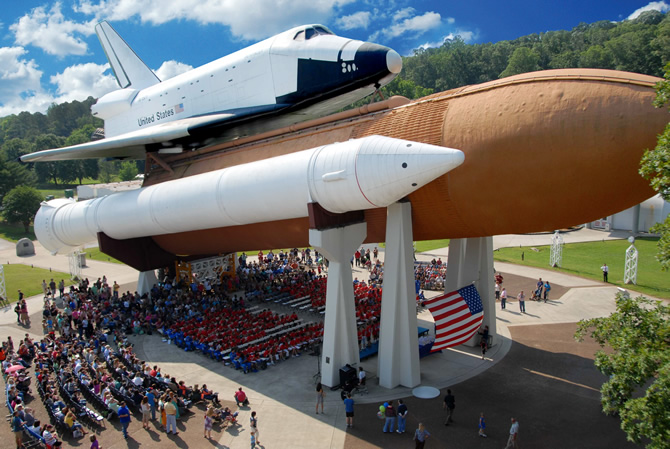Authors:
Historic Era: Era 10: Contemporary United States (1968 to the present)
Historic Theme:
Subject:
Winter 2022 | Volume 67, Issue 1


Authors:
Historic Era: Era 10: Contemporary United States (1968 to the present)
Historic Theme:
Subject:
Winter 2022 | Volume 67, Issue 1
Editor’s Note: Brent Glass is Director Emeritus of the Smithsonian’s National Museum of American History and the author of 50 Great American Places: Essential Historic Sites Across the U.S.

On May 2, 1945, in the Bavarian town of Schattwald, a young man on a bicycle rode up to American troops and announced, “We are a group of rocket specialists up in the mountains. My brother invented the V-2. We want to surrender.”
The young man was Magnus von Braun and his brother was Wernher von Braun, director of Germany’s V-2 missile program. Within a few years, von Braun would be directing the U.S. space program and the team that designed the Saturn V rocket, the most powerful ever built. From 1964 to 1973, the United States used Saturn V rockets for 13 missions, including six lunar landings. On July 20, 1969, a Saturn V — powered rocket- launched Apollo 11, which landed on the moon, and two astronauts, Neil Armstrong and Buzz Aldrin, became the first people to walk on its surface.
Finding von Braun and the other German engineers and scientists was an important objective for the Americans. They needed to locate German weapons, to learn how they were made, and to find this in-formation before the Soviet Union did. They called their program Operation Paperclip, reflecting the extensive files maintained on German scientists. Once they had custody of von Braun, American officials had a difficult decision to make. They could consider him and his colleagues prisoners of war and charge them with war crimes in light of their work on behalf of the Nazi regime on rocket missiles used against Britain and other countries during the war. On the other hand, America needed their expertise to develop the next generation of weaponry.
For five years, the von Braun brothers and 116 German engineers worked as alien employees at Fort Bliss near El Paso, Texas, where they tested rockets at the White Sands Proving Ground in New Mexico. In 1950, the Army relocated the rocket research program to Redstone Arsenal in Huntsville, Alabama, a good site for classified research. It was federally owned land, a former Army chemical depot with many empty munitions assembly buildings and lots of acreage for future growth. And most decisively, Huntsville was the home of Alabama’s junior senator, John Sparkman, who sought more military spending in his state.
At Redstone, Wernher von Braun guided the American rocket program. A brilliant